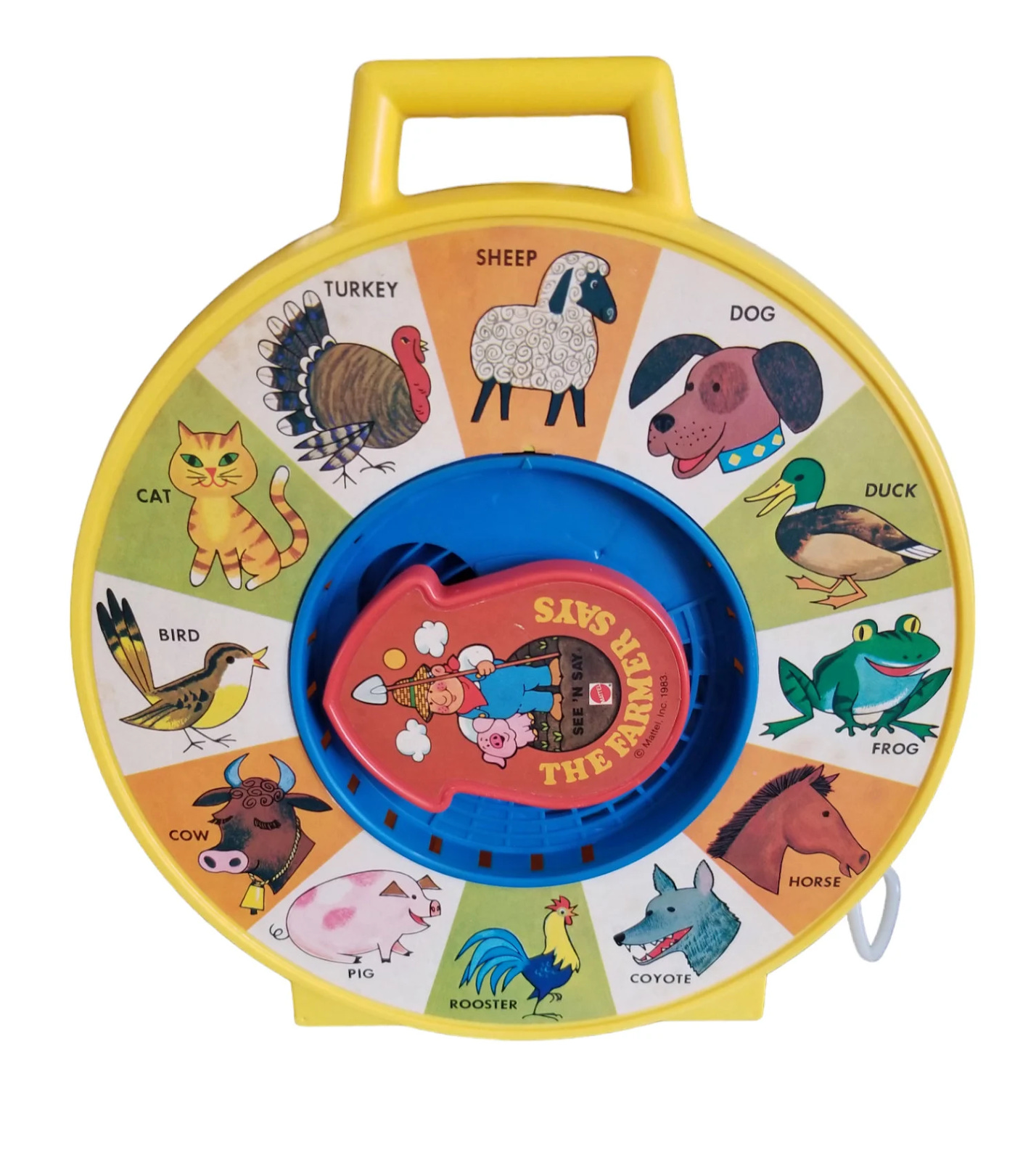American early childhood education places an inordinate emphasis on the sounds farm animals make. The cow says “moo”. The sheep says “baa”. Who cares?
My kids never interact with farm animals. They’ve been to more zoos than farms, and from their perspective, giraffes and penguins are more common than cows and sheep. Media fills their imaginations with unicorns and dragons and dinosaurs, not livestock. Identifying farm animals is not a useful skill.
The emphasis on farm animals sounds is a particularly American phenomenon. Why? Perhaps it is a holdover from our agricultural past. American public education was standardized in the early 1900s, when over ⅓ of the population were farmers. Today, however, less than 2% of Americans are farmers, and only a fraction of them work with livestock. Education is often tradition-bound, with teachers and parents remembering and recreating the way they were taught a generation ago. There’s also not much pressure to iterate. Public education lacks much competition to improve, and preschools’ success is dictated by satisfied parents rather than educated children; the outcomes do not manifest until a decade later. Moreover, perhaps the content of preschool education does not matter much. Young children require socialization and interaction, but perhaps the topic of interaction itself is unimportant to their development.
A more charitable case argues that animals are useful for teaching language. The range of onomatopoeic sounds teaches kids to vocalize, and the association between an image and a sound is a precursor to reading. Vocalization could be taught via other common objects, such as “car goes vroom” and “phone goes ring”, but animals are more compelling. Human babies are hard-wired to identify and engage with faces, and mammals are only a short leap away. Kids do love to interact with cats and dogs, and perhaps using cows and sheep offers a more compelling subject matter than microwaves and laundry machines.
On the other hand, I don’t think any case can be made for this next issue.
Roy G. Biv was wrong
My daughter came home one day telling me about the 7 colors of the rainbow. I corrected her, saying there was actually an infinite spectrum of colors. I tried and failed to explain the concept of a continuum. Then I backtracked and showed her a color wheel, saying there were 6 colors. She was intransigent, citing Roy G. Biv and insisting there were 7 colors. In my frustration, I have come to gripe at you instead.
First of all, there is an infinite spectrum of colors, and the labels we apply are just a useful way to divide it into finite categories. We can divide it into ROYGBIV, but we could just as easily divide it into more or less. This should be obvious if you look at a box of crayons; there’s more than 7 colors in there.
Of course, infinite continuums are difficult to explain and unwieldy as a mental model. We should offer simplified categories. But why “indigo”? Are we dying blue jeans? It’s an outdated agricultural product. Nobody talks about indigo anymore. Every color wheel you find will show 6 colors, with indigo and violet lumped together as purple.
The classic color wheel uses 6 colors. Six offers a nice structure to talk about primary colors, secondary colors, opposite colors, warm/cold colors, etc. Any artist talking about color theory will use purple rather than indigo and violet.
There’s a biological basis for this too. Our eyes have three different color-sensing cones, corresponding to red, green, and blue. When we perceive colors, it is due to these three types of cones being activated in some combination. With 3 cones, we have 2^3 = 8 possible combinations. All activated is white, all inactive is black, and the remaining 6 combinations correspond to the 6 colors on the wheel. These cones also correspond to the Red-Green-Blue / Cyan-Magenta-Yellow color system; the former triplet has exactly 1 cone activated, and the latter triplet has 2 cones activated. Again, six. Not seven.







Your most controversial article to date. I disagree on farm animals being an American phenomenon. Kids like animals and so kids' books are about animals. Most European countries also had an agrarian past and they also have the same farm animal books we have here. It is a slight possibility that American "farm animal book" culture seeped into Europe and that's why they have similar books. But I believe that these are independent events.